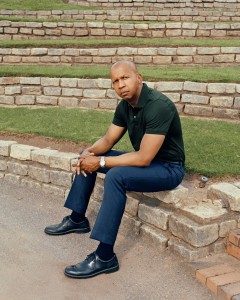data-pb-field=”customFields.web_headline”>Why the African American museum’s food focus will go beyond soul
Of course, there will be soul food. But that’s not the soul of the Foodways exhibition at the upcoming National Museum of African American History and Culture.
“We wanted to break up the idea that there’s one type of food, and that African Americans all eat that type of food,” said curator Joanne Hyppolite. “African Americans have been involved in perfecting a number of American cuisines. Because literally, they were always in everyone’s kitchen. It’s way more diverse than soul food.”
One area of focus? Oysters.
Catching, shucking and selling oysters was a way for African Americans to make a living. “It’s an industry they’ve been involved in from sea to table,” Hyppolite said. Curators collected artifacts that were used by African American oystermen and vendors, including an oyster basket, culling hammer and shucking bucket, as well as menus from Thomas Downing’s Oyster House, a famous New York restaurant that attracted prominent white patrons. Many of the artifacts were purchased at a local antique store.
Street vendors, from the early 20th century to Baltimore’s present-day Arabbers, are another area of concentration. The museum has amassed a series of old postcards depicting African American fruit sellers, and an audiovisual component in the exhibition will include field recordings of their distinctive cries, which have been preserved by the Library of Congress. (Read more)
The 50 most important college football players in Texas in 2016 — No. 13: Prairie View’s Trey Green
 Prairie View’s football team, coached by Willie Simmons, embark on their quest for the 2016 SWAC title and more beginning Sunday with the debut of the new Panther Stadium at Blackshear Field with the Labor Day Classic against arch rival Texas Southern at 5 p.m. The game will be televised live nationally on ESPNU. The game is sold out.
Prairie View’s football team, coached by Willie Simmons, embark on their quest for the 2016 SWAC title and more beginning Sunday with the debut of the new Panther Stadium at Blackshear Field with the Labor Day Classic against arch rival Texas Southern at 5 p.m. The game will be televised live nationally on ESPNU. The game is sold out.
Featured for the Panthers this season will be senior quarterback Trey Green (6-3, 220) who is included on several watch lists for this season, including Texas Football magazine’s list of most important collegiate players in Texas. Last season, Green, from Beaumont Ozen High School, completed 181-303 passes (58.8 %) for 2,614 yards with 21 touchdowns and three interceptions while rushing for 248 yards and seven touchdowns. He also had three 300-plus yard passing games, including one 400-yard passing game while leading the SWAC’s most prolific offense. The Panthers led the nation in scoring (44.9 ppg.) and lead the SWAC in total offense (487.5 ypg) and passing yards per game (261.4), and was second in total passing yards (2,614), TD passes (21), passing efficiency (150.6), and total offense (2,857).
PV finished second in the SWAC’s West Division last season with an 8-2 overall record, finishing the season strong with a six-game winning streak.
History of African-American Marching Bands
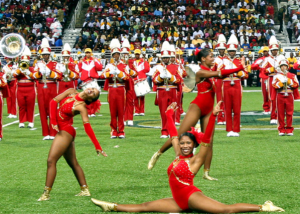 By most accounts, the first-ever black college football game, played in Salisbury, N.C, in December 1892, had a festive, picnic-like atmosphere not much different from the mood of the games today. But something was missing.
By most accounts, the first-ever black college football game, played in Salisbury, N.C, in December 1892, had a festive, picnic-like atmosphere not much different from the mood of the games today. But something was missing.
Fans were in the stands. The teams—Biddle (now Johnson C. Smith University) and nearby Livingstone College—played two 45-minute halves of football. There was a break at halftime.
What was missing? The staple of today’s black college football halftime—the drum major opening the show by high-kicking his way to midfield then doing his trademark back bend until his head touches the ground; the marching band struttin’ onto the field with superb instrumentation and intricate formations; the dance squad displaying dazzling style and steps.
The showmanship and pageantry were absent at other college football games of that era, as well. In fact, before the 1920s very few schools had marching bands. But that would change—with black schools in Alabama helping to usher in the marching band era on college campuses. (Read more)
Related: PVAMU Marching Storm Band Headed to NYC for 2017 Macy’s Thanksgiving Day Parade — And how you can help
The Legacy of Lynching, on Death Row
From The New Yorker: In Alabama, Civil Rights attorney Bryan Stevenson is saving inmates from execution and memorializing the darkest episodes of America’s past.
Stevenson and his colleagues have managed to slow, but not stop, the death-penalty machinery in Alabama—an enormous challenge in view of the state’s conservative and racially polarized politics. Alabama has an elected judiciary, and candidates compete to be seen as the toughest on crime. It’s also the only death-penalty state in which judges routinely overrule juries that vote against imposing death sentences. (In their campaigns, judges boast about the number of death sentences they’ve imposed.) Alabama’s population is about twenty-seven-per-cent African-American. The nineteen appellate judges who review death sentences, including all the justices on the state Supreme Court, are white and Republican. Forty-one of the state’s forty-two elected district attorneys are white, and most are Republican. The state imposes death sentences at the highest rate in the nation, but the Equal Justice Initiative has limited the number of executions to twenty-two in the past decade, and there has been only one in the past three years. “It’s just intensive case-by-case litigation,” Stevenson said. “We’ve gone more aggressively than anyone in the country on racial bias against African-Americans in jury selection. We have extensive litigation on the lethal-injection protocols. We identify inadmissible evidence. We push hard on every issue.”
But Stevenson, who is fifty-six, has come to believe that the defense of people enmeshed in the criminal-justice system, while indispensable, is an inadequate response to the deeper flaws in American society. He served on President Obama’s Task Force on 21st Century Policing, and he has been an ally of the Black Lives Matter movement. The recent police shootings of African-American men in Baton Rouge, Louisiana, and outside St. Paul, Minnesota, have increased his pessimism. “These police shootings are symptoms of a larger disease,” he told me. “Our society applies a presumption of dangerousness and guilt to young black men, and that’s what leads to wrongful arrests and wrongful convictions and wrongful death sentences, not just wrongful shootings. There’s no question that we have a long history of seeing people through this lens of racial difference. It’s a direct line from slavery to the treatment of black suspects today, and we need to acknowledge the shamefulness of that history.” (Read more)
TIPHC Bookshelf
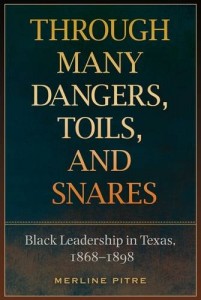 Published scholarship on black history in Texas is growing and we’d like to share with you some suggested readings, both current and past, from some of the preeminent history scholars in Texas and beyond. We invite you to take a look at our bookshelf page — including a featured selection — and check back as the list grows. A different selection will be featured each week. We welcome suggestions and reviews. This week, we offer, “Through Many Dangers, Toils and Snares, Black Leadership in Texas, 1868-1898,” by Merline Pitre.
Published scholarship on black history in Texas is growing and we’d like to share with you some suggested readings, both current and past, from some of the preeminent history scholars in Texas and beyond. We invite you to take a look at our bookshelf page — including a featured selection — and check back as the list grows. A different selection will be featured each week. We welcome suggestions and reviews. This week, we offer, “Through Many Dangers, Toils and Snares, Black Leadership in Texas, 1868-1898,” by Merline Pitre.
Through Many Dangers, Toils and Snares, originally published in 1985, was the first book to make an in-depth examination of the cadre of African American lawmakers in Texas after the Civil War. Those few books that addressed the subject at all treated black legislators en masse and offered little or nothing about their individual histories. Early scholars tended to present isolated events of the violence and political deterrents inflicted upon black voters but said very little about how these obstacles affected black lawmakers.
This Week In Texas Black History, Aug. 28-Sep. 3
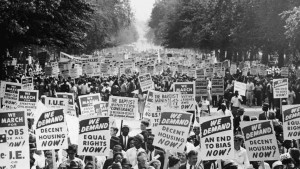 28 – On this date in 1963, in conjunction with the National March for civil rights in Washington, approximately 900 protesters marched on the Texas state capitol in Austin. The group, which included Hispanics, blacks, and whites, attacked the slow pace of desegregation in the state and Gov. John Connally’s opposition to the pending civil rights bill in Washington.
28 – On this date in 1963, in conjunction with the National March for civil rights in Washington, approximately 900 protesters marched on the Texas state capitol in Austin. The group, which included Hispanics, blacks, and whites, attacked the slow pace of desegregation in the state and Gov. John Connally’s opposition to the pending civil rights bill in Washington.
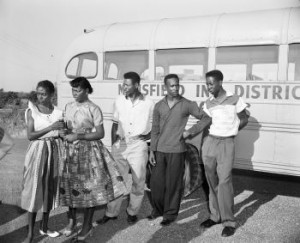 30-31</bstrong – In 1956, defiant white citizens of Mansfield blocked the enrollment of three black students at Mansfield High School in what became known as the “Mansfield School Desegregation Incident.” The school district had been sued by the NAACP and a federal court ordered the district to desegregate – the first such order in Texas. However, Mansfield would not integrate its schools until 1965.
30-31</bstrong – In 1956, defiant white citizens of Mansfield blocked the enrollment of three black students at Mansfield High School in what became known as the “Mansfield School Desegregation Incident.” The school district had been sued by the NAACP and a federal court ordered the district to desegregate – the first such order in Texas. However, Mansfield would not integrate its schools until 1965.
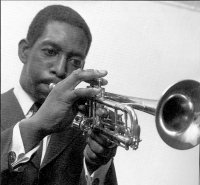 30 – In 1924, Kenny Dorham, jazz trumpeter, was born on this day in Fairfield. A pioneer of the bebop era, Dorham attended Anderson High School in Austin and played in the Wiley College dance band. In the ’40s and ’50s, he played with such greats as Dizzy Gillespie, Billy Eckstine, and Thelonius Monk. Dorham was also a founding member of the Jazz Messengers with Art Blakey.
30 – In 1924, Kenny Dorham, jazz trumpeter, was born on this day in Fairfield. A pioneer of the bebop era, Dorham attended Anderson High School in Austin and played in the Wiley College dance band. In the ’40s and ’50s, he played with such greats as Dizzy Gillespie, Billy Eckstine, and Thelonius Monk. Dorham was also a founding member of the Jazz Messengers with Art Blakey.
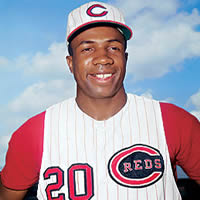 31 – Frank Robinson, the first black manager in Major League Baseball, was born on this day in Beaumont. Robinson grew up in Oakland and played the bulk of his career with the Cincinnati Reds and Baltimore Orioles. He won the triple crown — leading the league in home runs (49), runs batted in (122), and batting average (.316) — in 1966, and became manager of the Cleveland Indians in 1975. A Baseball Hall of Famer, his 586 career home runs are ninth all-time in MLB.
31 – Frank Robinson, the first black manager in Major League Baseball, was born on this day in Beaumont. Robinson grew up in Oakland and played the bulk of his career with the Cincinnati Reds and Baltimore Orioles. He won the triple crown — leading the league in home runs (49), runs batted in (122), and batting average (.316) — in 1966, and became manager of the Cleveland Indians in 1975. A Baseball Hall of Famer, his 586 career home runs are ninth all-time in MLB.
September
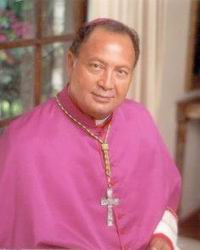 1 — Curtis John Guillory was born on this day in 1943 in Mallet, Louisiana. Guillory became Bishop of the Roman Catholic Diocese of Beaumont in 2000 and the first African American Catholic bishop in Texas. He is the first non-canon lawyer to hold this position. He has done advanced work in Christian Spirituality and Jungian psychology. He is the first African-American to be bishop of Beaumont — or ordinary of any diocese in Texas, for that matter. His father’s side of the family has been traced back to France. His mother’s side of the family has been traced to the Isle Dominica in the West Indies. He is the first Beaumont bishop to be a member of a religious community. He is a member of the Society of the Divine Word. He is the second bishop of Beaumont to have Louisiana roots. Bishop Warren Boudreaux was the first. Both were born and reared in the Diocese of Lafayette. Six of the 13 African-American bishops are from that diocese. He is the third of our five bishops who came by way of the Galveston-Houston Diocese. Bishops Vincent M. Harris and Bernard J. Ganter were natives of that diocese. Bishop Guillory served as auxiliary there for 12 years. Curtis John Guillory was born to Wilfred and Theresa Guillory on September 1, 1943, in Mallet, St. Landry Parish, Louisiana. He is the oldest of 16 children (six sons, ten daughters).
1 — Curtis John Guillory was born on this day in 1943 in Mallet, Louisiana. Guillory became Bishop of the Roman Catholic Diocese of Beaumont in 2000 and the first African American Catholic bishop in Texas. He is the first non-canon lawyer to hold this position. He has done advanced work in Christian Spirituality and Jungian psychology. He is the first African-American to be bishop of Beaumont — or ordinary of any diocese in Texas, for that matter. His father’s side of the family has been traced back to France. His mother’s side of the family has been traced to the Isle Dominica in the West Indies. He is the first Beaumont bishop to be a member of a religious community. He is a member of the Society of the Divine Word. He is the second bishop of Beaumont to have Louisiana roots. Bishop Warren Boudreaux was the first. Both were born and reared in the Diocese of Lafayette. Six of the 13 African-American bishops are from that diocese. He is the third of our five bishops who came by way of the Galveston-Houston Diocese. Bishops Vincent M. Harris and Bernard J. Ganter were natives of that diocese. Bishop Guillory served as auxiliary there for 12 years. Curtis John Guillory was born to Wilfred and Theresa Guillory on September 1, 1943, in Mallet, St. Landry Parish, Louisiana. He is the oldest of 16 children (six sons, ten daughters).
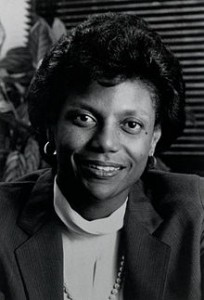 1 – On this day in 1990, Dr. Marguerite Ross Barnett became president of the Univ. of Houston and the first black woman to lead a major American university. From Charlottesville, Virginia she grew up in Buffalo, New York and earned a political science degree from Antioch College and master’s and doctorate degrees in political science from the University of Chicago. A recognized scholar in political science, she taught at Princeton, Howard, and Columbia universities. At UH, she succeeded in raising more than $150 million for the institution, establishing the Texas Center for Environmental Studies, and instituting the nationally renowned Bridge Program, which aided and motivated disadvantaged students to make a successful transition from high school to college. Barnett died of complications from a neuro-endocrinological condition on February 26, 1992.
1 – On this day in 1990, Dr. Marguerite Ross Barnett became president of the Univ. of Houston and the first black woman to lead a major American university. From Charlottesville, Virginia she grew up in Buffalo, New York and earned a political science degree from Antioch College and master’s and doctorate degrees in political science from the University of Chicago. A recognized scholar in political science, she taught at Princeton, Howard, and Columbia universities. At UH, she succeeded in raising more than $150 million for the institution, establishing the Texas Center for Environmental Studies, and instituting the nationally renowned Bridge Program, which aided and motivated disadvantaged students to make a successful transition from high school to college. Barnett died of complications from a neuro-endocrinological condition on February 26, 1992.
 2 — E.H. Anderson was born on this day in 1850 in Memphis, Tenn. Anderson would become the second principal for Prairie View State Normal School (Prairie View A&M University) in 1879. At the time, the school’s enrollment was only 50 students.
2 — E.H. Anderson was born on this day in 1850 in Memphis, Tenn. Anderson would become the second principal for Prairie View State Normal School (Prairie View A&M University) in 1879. At the time, the school’s enrollment was only 50 students.
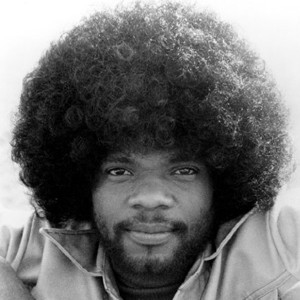 2 – On this date in 1946, musician William Everett “Billy” Preston was born in Houston. A child prodigy, Preston began playing piano at age 3, was performing as an organist by age 10 for gospel singers such as Mahalia Jackson and touring with Little Richard at age 16. He became widely acknowledged as the “Fifth Beatle” having been the only party to ever have his name included in the label credits of the Beatles “Let It Be” and the “Abbey Road” albums as well as the landmark “White Album.” As a solo artist, Preston had a string of Number 1 hit singles including the Grammy-winning “Outta Space,” “Will It Go Round In Circles,” “Nothing From Nothing” and “Space Race.” He wrote the song “You Are So Beautiful” which was a
2 – On this date in 1946, musician William Everett “Billy” Preston was born in Houston. A child prodigy, Preston began playing piano at age 3, was performing as an organist by age 10 for gospel singers such as Mahalia Jackson and touring with Little Richard at age 16. He became widely acknowledged as the “Fifth Beatle” having been the only party to ever have his name included in the label credits of the Beatles “Let It Be” and the “Abbey Road” albums as well as the landmark “White Album.” As a solo artist, Preston had a string of Number 1 hit singles including the Grammy-winning “Outta Space,” “Will It Go Round In Circles,” “Nothing From Nothing” and “Space Race.” He wrote the song “You Are So Beautiful” which was a
multi-platinum hit for British blues singer Joe Cocker.
Blog: Ron Goodwin, author, PVAMU history professor
Ron Good  win’s bi-weekly blog appears exclusively for TIPHC/TBHPP. Goodwin is a San Antonio native and Air Force veteran. Generally, his column will address contemporary issues in the black community and how they relate to black history. He and the TIPHC/TBHPP staff welcome your comments. His latest blog is, “Race Matters, or, What the hell do I have to lose?” Read it
win’s bi-weekly blog appears exclusively for TIPHC/TBHPP. Goodwin is a San Antonio native and Air Force veteran. Generally, his column will address contemporary issues in the black community and how they relate to black history. He and the TIPHC/TBHPP staff welcome your comments. His latest blog is, “Race Matters, or, What the hell do I have to lose?” Read it
Submissions Wanted
Historians, scholars, students, lend us your…writings. Help us produce the most comprehensive documentation ever undertaken for the African American experience in Texas. We encourage you to contribute items about people, places, events, issues, politics/legislation, sports, entertainment, religion, etc., as general entries or essays. Our documentation is wide-ranging and diverse, and you may research and write about the subject of your interest or, to start, please consult our list of suggested biographical entries and see submission guidelines. However, all topics must be approved by TIPHC/TBHPP editors before beginning your research/writing.
We welcome your questions or comments via email or telephone – mdhurd@pvamu.edu.

